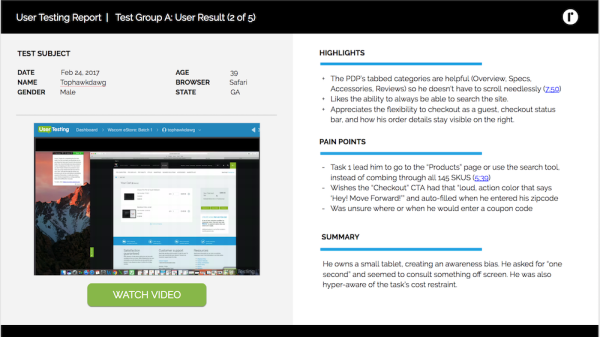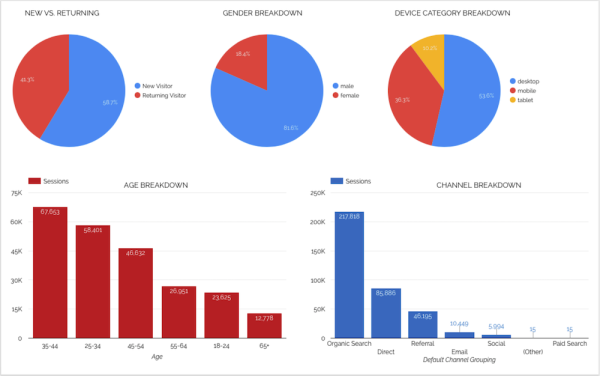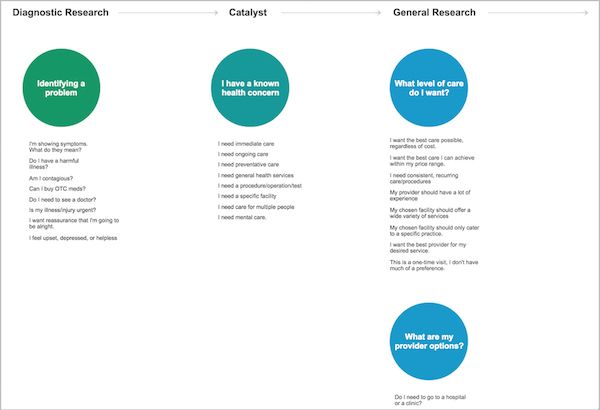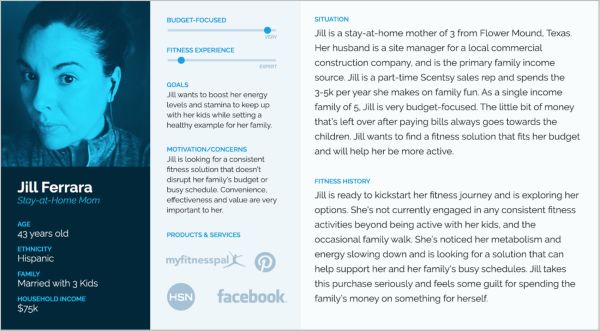Go Back
Applying a user-centric approach to research and design helps guide the problem solving process to understand customer motivations, ultimately improving performance.
User-centric design (or UCD) is a principle that puts the user’s needs as the focus of every stage of the decision-making process through research, concept, design, development, and implementation. In this post, we’ll will unpack the importance of taking a user-centric to design and the impact it can have at driving performance.
Always talk to your users
There are myriad of ways to get feedback from users at any stage of the design process. You can collect data in-person with focus groups and field studies, or you can gather data digitally through user survey, customer service feedback or user tests.
If you’re unable to talk to users directly, there are strategies you can use to use empathy to understand your users at a high level such as conducting stakeholder interviews, developing user stories, and diving into analytics.

Use qualitative and quantitative data for a holistic perspective
Any one data point can’t answer all of the questions you may have about your digital experience, however using a grid of data-gathering techniques can help paint a clearer picture. Qualitative data typically starts to form understand around and what they are hoping to find. Quantitative data helps put volume to learnings to build confidence in user understanding conclusions while identifying subtler user opportunities in performance data. Both types of data work hand-in-hand to represent the real behavior of an average user.

Start with a customer considerations map
Holding a workshop to develop customer considerations maps are a great way to gain a holistic view of all Holding a workshop to develop customer considerations maps are a great way to gain a holistic view of all the decisions a user must make to make a purchase. Considerations mapping is a critical design thinking exercise to help you understand the needs and motivations of your target customers. It’s an effective first step for customer journey mapping, and an effective way to drive design and content requirements. The exercise is designed to detail the entire consideration process for users – from the point before a potential customer is aware of your brand, all the way to becoming a new customer. Many teams are so close to their digital experiences that they can miss opportunities to improve. Considerations maps can help uncover previously unidentified blockers, generating insightful ways to overcome those challenges to create more meaningful experiences online.

Document your audiences
Start with identifying who your users are. Here are a few tips to get you started with this important step of the consideration mapping process:
-
- Start thinking of your users are heroes. These heroes are the main characters immersed in a narrative surrounding your digital experience, with each user type on a unique journey that ends in engagement with your brand.
- Who are your heroes? Be sure to go beyond demographics to assign unique backstories, motivations, and struggles. Work to create rich user personas that represent the primary groups within your audience. This will allow you to create an experience that speaks to the specific needs of each.
- Let your audiences evolve. You won’t get everything right on the first try. Getting to know the subtle intricacies of your audience groups takes time. Documenting what you know is step one.

Far too often, the impulse in the design process is to create a digital experience that will work for everyone. However when a design doesn’t meet the needs of unique audiences, the result can be a generic, impersonal experience that doesn’t serve any user base as well as it could. Being intentional about identifying who your audience is and mapping your design decisions back to their needs and concerns will yield happier customers, and impressive results.
Written by Director of Design, Lacie Webb


